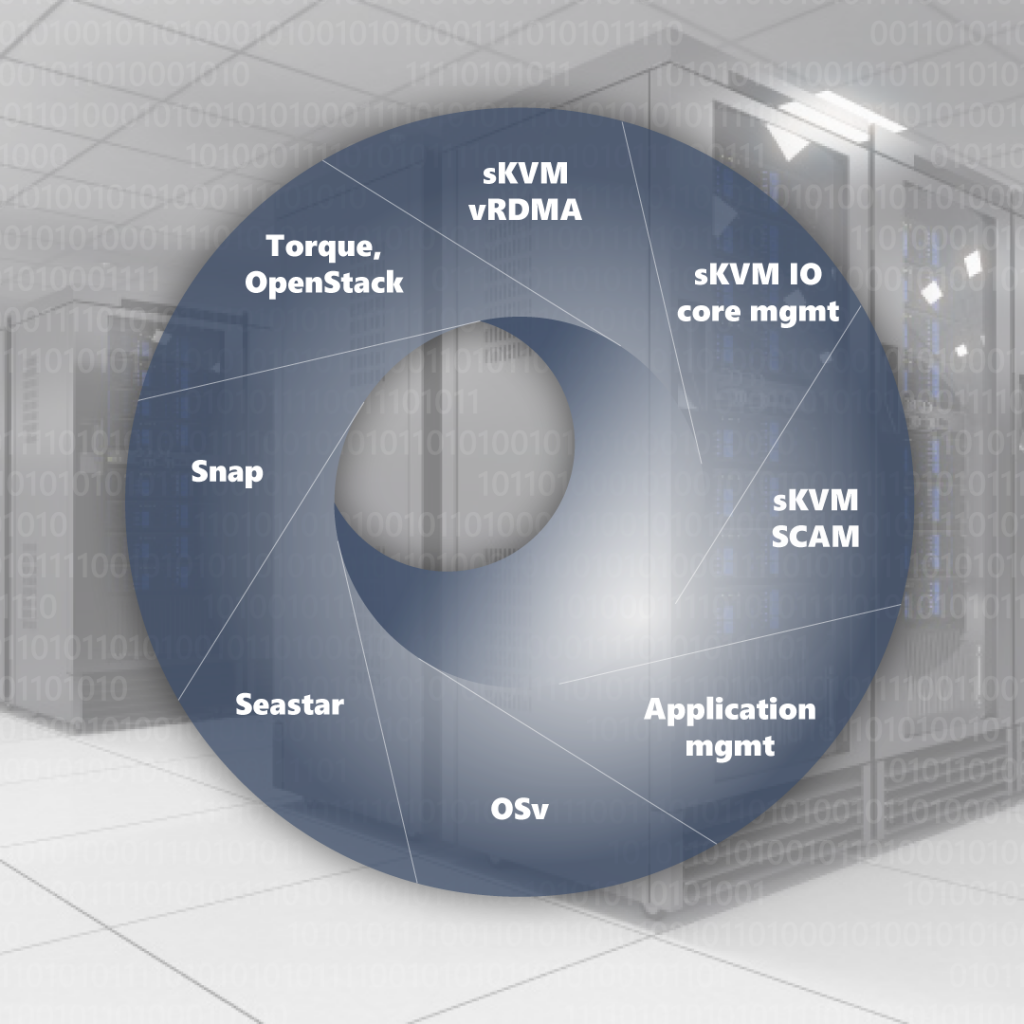The new release includes enhancements that improve I/O performance and increase flexibility of Cloud and HPC software running on top of OSv and sKVM.
Ljubljana, Slovenia | Aug 2016
In response to increasing user demand for flexibility and the I/O performance to run HPC workloads, big data analytics or simulations on virtualized machines or in containerized environments, MIKELANGELO, the European virtualization optimization research project, is addressing the need by improving the existing clusters with lighter, faster virtualization.
MIKELANGELO is introducing a technology stack, focusing on improving performance and increasing flexibility of Cloud and HPC platforms. It starts by extending KVM, one of the most popular and advanced open-source hypervisors. MIKELANGELO introduces the IO Core Manager technology optimizing the tradeoff between compute and I/O operations to achieve maximal performance. MIKELANGELO contributes significantly to making the lightweight guest operating system OSv as general purpose as possible. Initial public release offers support for NFS and Open MPI, as well as several other additions, like lightweight process-like environment. At the cross section between the two, MIKELANGELO exploits high performance network devices allowing legacy applications to benefit from modern data centers.
Security of the virtualized workloads has improved through SCAM: Side-Channel Attack Mitigation module. Scalable monitoring and instrumentation of the overall technology stack has been vastly improved with introduction of snap and a set of probes tailored specifically for MIKELANGELO technology, which now allow for using this framework in a wide array of setups. Integrations upstream include Torque and OpenStack.
The integration of the Cloud and HPC stacks and evaluation through the Big Data, HPC (Aerodynamics with OpenFOAM and Cancellous Bones Analysis use cases) and finally, cloud bursting use cases shows improved performance in various scenarios. How engineering simulation can help speed up design turnaround is demonstrated in the OpenFOAM use case, while noticeable improvements of elasticity of cloud services (total operations per second) have been reported in cloud bursting use case.
“Some of our components, applications and demonstrators can be run and checked immediately, while others may require a little more hands-on approach,“ said Daniel Vladušič, the project coordinator and CRO at XLAB. “You are invited to check it out, kick the tires and provide feedback. Also, expect rapid updates with the next major release scheduled in January 2017.”
Some of MIKELANGELO’s HPC best practices will be presented at the OpenStack Summit in Barcelona, October 26.
The complete list of components, how these fit together and how well they perform is available at MIKELANGELO Releases page. The enhancements are being upstreamed to open source repositories at GitHub.
MIKELANGELO is running from 1/1/2015 to 31/12/2017 and is funded by the European Commission’s Horizon 2020 Framework Programme under the grant agreement No. 645402. It involves a consortium of partners: Huawei, IBM, Intel, ScyllaDB, High Performance Computing Center, Stuttgart, GWDG, Ben-Gurion University of the Negev, Pipistrel and XLAB (coordinator).









